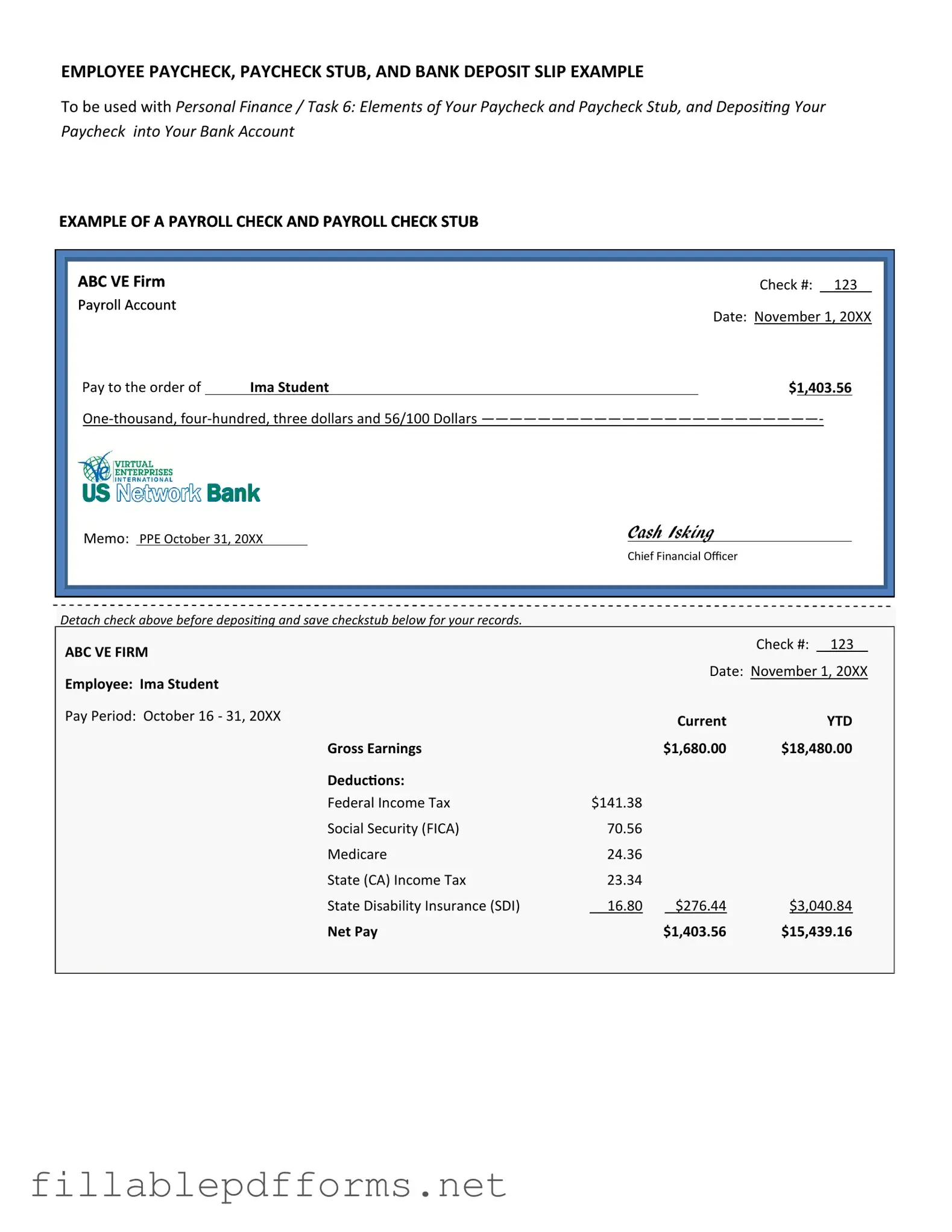When it comes to managing employee compensation, the Payroll Check form plays a crucial role in ensuring that workers are paid accurately and on time. This essential document not only outlines the amount earned by an employee for a specific pay period but also details deductions for taxes, benefits, and other withholdings. Each Payroll Check form typically includes vital information such as the employee's name, identification number, and the pay period dates, providing a clear record of earnings. Additionally, it serves as a legal document that can be referenced in case of discrepancies or disputes regarding payment. Understanding how to properly fill out and utilize this form is important for both employers and employees, as it helps maintain transparency and trust in the workplace. Furthermore, staying compliant with federal and state regulations is paramount, making familiarity with the Payroll Check form essential for effective payroll management.
